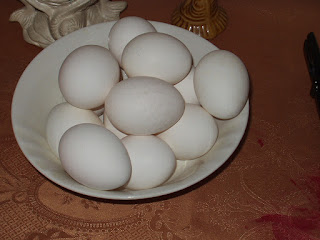 |
| San Diego Comic Con 2012, Photo by Rudy Eats |
You've read the book. More than once. And now you've seen the movie in 3D, IMAX, and HFR. So you should be more than ready to ace this short quiz about The Hobbit. (Or maybe not. I have to confess that some of these questions are for freaks and fanatics--but answers are included.)
1.) How many meals do hobbits regularly eat in a day? (That is, for those that divide the eating continuum into separate events.)
2.) When was Bilbo Baggins born: month, day, year, era?
3.) Who were Bilbo's parents?
4.) Where do Bilbo and Gollum meet? (Hint: not in the parking lot of The Green Dragon.)
5) What are the names of the three trolls in this story? (Hint: Curly is not one of them.)
6.) Where did Tolkien get his dwarf names?
7.) What does the name Gandalf mean?
8.) What were the three swords that the dwarves found in the trolls' cave?
9.) How did Thorin get the name Oakenshield?
10.) Which characters from The Lord of the Rings trilogy appear in The Hobbit: An Unexpected Journey?
ANSWERS
1.) Hobbit meals: six, "when they can get them"2.) Bilbo's birthday: September 22nd, in the year 2890 of the third age of Middle-earth.
3.) Bilbo's parents: Bungo Baggins (father) and Belladonna Took (mother)
4.) Where Bilbo met Gollum: in a cavern beneath the Misty Mountains
5.) The three trolls: Bert, Bill, and Tom
6.) Dwarf names? If you guessed "from the dwarf phone book," you aren't far off. Most are listed as the names of dwarves in the Elder Eddas. "Oin" and "Balin" were created by Tolkien to rhyme with Gloin and Dwalin.
7.) Gandalf. If you guessed "Gray-bearded smoke-ring-blower guy," at least you're trying. Very trying. In Norse, Gandalf means "wand-elf." or "sorcerer-elf."
8.) The three swords: Orcrist, "Goblin-cleaver"; Glamdring, "Foe-hammer"; and Sting (which was technically a knife but just the right size for a hobbit sword)
9.) The name Oakenshield? By using an oak branch as a shield during a battle
10.) Characters from LOTR: Gandalf, older Bilbo, Frodo, Galadriel, Elrond, Saruman, and Gollum. Also, Radagast the Brown--from the book version. Um, am I forgetting any others?
 |
| Premier of The Hobbit: an Unexpected Journey |














.jpg)





































